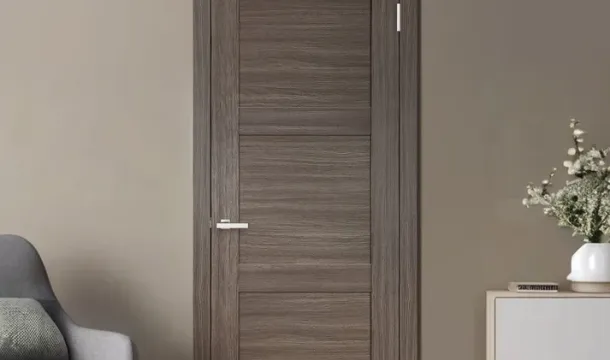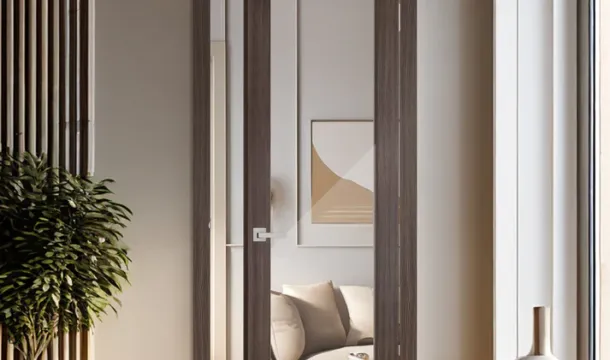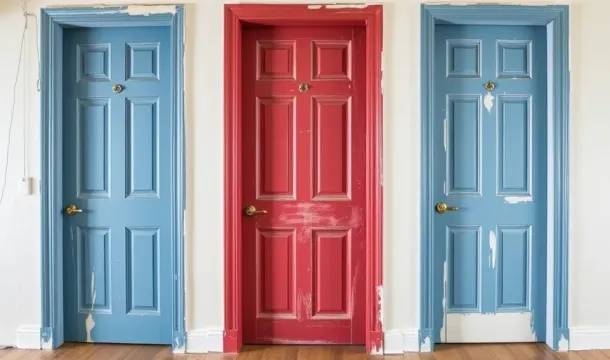Common Errors to Avoid During Interior Door Installation
Popular Articles
Misaligned hinges often cause doors to hang unevenly or bind during operation. When installing interior doors, ensure hinges are properly positioned and securely fastened to prevent sagging and uneven gaps.
Incorrect gap spacing between the door and frame leads to drafts, noise leakage, and difficulty closing. Maintain consistent clearance–typically 1/8 inch on sides and top–to allow smooth movement without compromising insulation.
DIY installers frequently overlook level and plumb measurements. Using a reliable level when mounting the door frame helps avoid crooked doors that stick or fail to latch correctly. Precise alignment simplifies hardware installation and extends door longevity.
Choosing the right tools and following manufacturer guidelines reduces common mistakes such as stripped screws, damaged door edges, or warped frames. Proper preparation and attention to detail ensure a professional finish for your home’s interior doors.
Incorrect Door Frame Measurements
Measure the door frame width and height at multiple points–top, middle, and bottom–to identify any irregularities before purchasing or installing interior doors. Failing to account for out-of-square frames leads to uneven gaps around the door, causing binding or excessive clearance.
Use a reliable tape measure and a carpenter’s square to verify corners are 90 degrees. If the frame is not square, adjust shims during installation rather than forcing the door, which can damage hinges and hardware. Always subtract 1/8 inch from both width and height measurements to allow for smooth operation and proper clearance.
A common mistake in DIY projects is measuring only once or using approximate numbers, increasing the risk of ordering incorrect door sizes. Keep in mind that standard interior doors typically require a rough opening larger than the door slab by at least 2 inches in width and height combined to accommodate framing, shims, and trim.
Incorrect measurements often result in visible gaps that compromise insulation and soundproofing. Address uneven gaps by ensuring the jambs are plumb and level during installation rather than relying on sanding or trimming the door itself.
Ignoring Wall Plumbness Issues
Always check the plumbness of your walls before installing interior doors. Walls that aren’t perfectly vertical cause uneven gaps around door frames, leading to poor door alignment and binding on hinges. Use a level or plumb bob to identify any deviations in the wall surface.
If the wall is out of plumb by more than 1/4 inch over the door height, adjust the door jambs accordingly instead of forcing the frame flush against the wall. Shimming behind the frame compensates for irregularities and prevents common mistakes like warped doors or squeaky hinges.
Failing to address wall plumbness results in uneven gaps that affect both aesthetics and functionality, making DIY installation frustrating and reducing door lifespan. Properly accounting for these imperfections ensures smooth operation and a professional finish that enhances your home’s interior.
Poor Hinge Alignment Problems
Misaligned hinges cause doors to bind, sag, or fail to close properly, leading to frustration and costly adjustments. Avoid these common mistakes when installing interior door hinges:
- Incorrect hinge mortising depth: Ensure the hinge leaf sits flush with both the door edge and frame. Too shallow or too deep mortises prevent smooth operation.
- Uneven spacing between hinges: Distribute hinges evenly–typically one near the top, one near the bottom, and a third in the middle for standard doors–to balance weight and reduce strain.
- Using inconsistent hinge sizes: Match all hinges in size and type; mixing can cause misalignment and uneven door movement.
- Failing to pre-drill screw holes: Pre-drilling prevents wood splitting and ensures screws hold firmly, maintaining hinge position during use.
- Ignoring door weight when selecting hinges: Heavier interior doors require sturdier hinges rated for increased load to avoid sagging over time.
Follow these tips for DIY installations:
- Use a combination square to mark exact hinge placement on both door and frame before cutting mortises.
- Check hinge alignment by temporarily attaching them with one screw each, then closing the door to identify tight spots or gaps.
- Tighten screws incrementally while testing door swing after each adjustment to achieve smooth movement without binding.
Poor hinge alignment is a common source of issues that compromise your home’s functionality. Proper attention during installation maximizes door lifespan and reduces post-installation repairs.
Wrong Door Clearance Gaps
Maintain consistent clearance gaps of 1/8 inch (3 mm) on all sides when installing interior doors to prevent binding or excessive rattling. Gaps that are too tight cause friction against the frame or floor, leading to premature wear on door edges and hinges. Conversely, oversized gaps compromise insulation, privacy, and soundproofing.
Check clearance around hinges carefully: improper hinge placement can reduce the effective gap between the door and frame. Use a feeler gauge during installation to verify uniform spacing, especially near hinges where uneven gaps often occur.
Avoid ignoring threshold clearance: ensure at least 1/2 inch (12 mm) gap under the door for carpet thickness or flooring expansion. Insufficient space here causes doors to scrape floors, damaging both surfaces.
Use shims behind hinges to adjust door position precisely, correcting minor misalignments that affect clearance gaps. This simple adjustment minimizes common mistakes related to uneven spacing without rehanging the entire door.
Test door swing fully before finalizing installation: observe if any part of the door catches due to incorrect gaps and make incremental adjustments. Properly set gaps improve longevity of doors and hinges while enhancing home comfort and aesthetics.
Improper Hardware Installation
Secure hinges with the correct screws–using shorter or weaker screws is a common diy mistake that compromises door stability. Always use screws long enough to penetrate the door frame studs for firm anchoring.
Avoid misaligned hardware by marking hinge positions precisely before drilling. Misplaced hinges cause uneven gaps and binding when opening or closing the interior door.
Check hinge orientation carefully; installing hinges upside down or reversed leads to improper door swing and uneven wear on moving parts.
Ensure latch plates and strike plates sit flush against the frame. Poorly recessed hardware creates excessive gaps, allowing drafts and reducing security.
Tighten all screws fully but avoid overtightening, which can strip holes in softer wood frames. This weakens the mounting points and makes future adjustments difficult.
Test door operation after hardware installation; smooth movement without sticking or rubbing indicates proper alignment and gap clearance.
Following these tips helps prevent common mistakes during hardware installation, ensuring your interior doors function smoothly and last longer in your home.
Popular Articles

Choosing the Perfect Interior Doors for Your Canadian Home

A Complete Guide to Choosing Interior Doors for Canadian Homes
